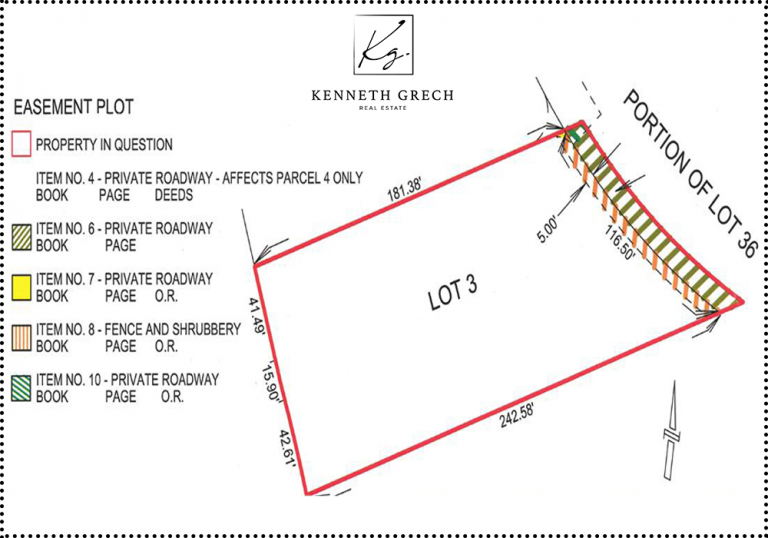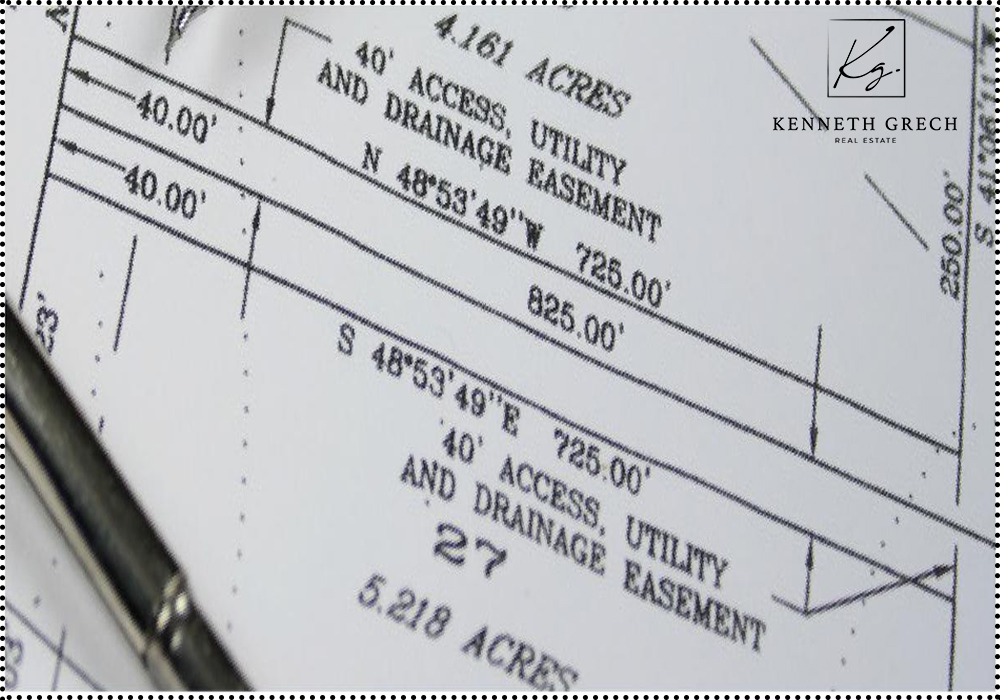An easement is an interest in the land of another which entitles the owner of such interest to a limited use or enjoyment of the land in which the interest exists.
In owther words the right to use the real property of another without possessing it. The essential qualities of an easement are:
- An interest in land and usually created by grant or agreement and generally must be transferred and used subject to the rules of real property.
- It is an interest in the land of another.
- It is a limited and non-possessory interest in land. The owner of an easement has a legal right to maintain the easement and a legal right of access across the easement.
Creation of Easements
- Express grant – a standard grant deed is used
- Express reservation – the new easement is reserved in the legal description of a deed conveying a fee interest.
- Condemnation – an easement may be taken under the right of eminent domain for public use (Example: a public street).
- Dedication – a common way of creating public easements with subdivision maps but recorded instruments may also be used (Example: irrevocable offers to dedicate).
Types of Easements
1. Appurtenant Easement
The right in another’s land which is created to benefit the easement holder in his use of particular land owned by him. (Example: A driveway easement over the adjoining property). The essential qualities of an appurtenant easement are:
- The easement is attached to the land of the owner of the easement.
- It passes with transfers of the land as an appurtenance, whether by voluntary conveyance or transfer by operation of law.
- It cannot exist separate and apart. For it to exist, there must be at least two parcels of land in separate ownership:
- Dominant tenement – the land to which the easement is attached or the land that is benefited
- Servient tenement – the land burdened by the easement.
2. Easement in Gross
A right in another’s property which is not created for the benefit of any land owned by the easement holder.

(Example: A public utility easement). The essential qualities of an easement in gross are:
- It is not attached to any particular land.
- It is a personal right or a right attached to the person of the easement holder.
- There is only a servient tenement – the land burdened by the easement. Since there is no dominant tenement, an easement in gross cannot pass as an appurtenance to land. It must be expressly transferred.
Appurtenant or In Gross?
If the instrument that creates the easement fails to state the type of easement, the following general rule applies:
It is not essential that the dominant tenement be described or mentioned in the grant. The nature of the right and interest of the parties mainly determine whether the easement is appurtenant or in gross.
Insuring Appurtenant Easements
The property burdened by the easement must also be searched to insure an appurtenant easement. The following matters must be considered before insuring the easement:
- Delinquent property taxes – any taxes that became a lien prior to the creation of the easement.
- Trust Deeds – any trust deeds or other liens that recorded prior to the creation of the easement.
- General Index Matters – any matters that recorded prior to the creation of the easement.
A foreclosure of any of the above matters that have priority over the easement could wipe it out and cause expensive claims.
Extinguishment of Easements
Once created, easements endure for an unlimited time unless terminated through particular events or acts.
- Express release – a quit claim deed can be used to extinguish either an appurtenant or in gross easement.
- Merger – An easement is extinguished by merger when the same person becomes the owner of the easement and the fee title to the servient tenement. The fundamental rule is a person cannot have an easement over his own property.
Explore Simi Valley Neighbourhoods
EXPLORE LOCAL NEIGHBOURHOODS IN Simi Valley





Notice: Trying to access array offset on value of type null in /home/kengugmc/public_html/wp-content/themes/houzez/comments.php on line 31
Notice: Trying to access array offset on value of type null in /home/kengugmc/public_html/wp-content/themes/houzez/comments.php on line 39
Notice: Trying to access array offset on value of type null in /home/kengugmc/public_html/wp-content/themes/houzez/comments.php on line 50
Notice: Trying to access array offset on value of type null in /home/kengugmc/public_html/wp-content/themes/houzez/comments.php on line 54